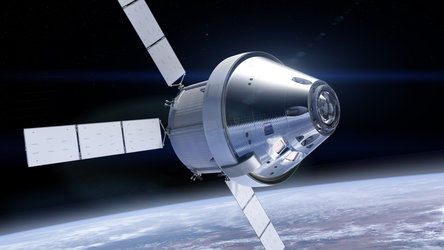Artemis II
NASA’s Orion spacecraft, powered by the European Space Module, is an exploratory vehicle designed for longer-duration flights beyond the Moon.

Following Orion’s Artemis I test-flight, during which the spacecraft will traveled beyond the Moon and returned to Earth without a crew, Artemis II will see four astronauts, NASA astronatus commander Reid Wiseman, pilot Victor Glover, and mission specialists Christina Koch with Canadian Space Agency astronaut Jeremy Hansen complete a different flight path.
The first mission was more technical, testing the capabilities of the Orion spacecraft with NASA’s Space Launch System rocket as well as manoeuvres and trajectories for flights beyond the Moon. Building on this, the second mission will be a two-week show of the functionality of the Orion spacecraft and its European Service Module. As such, Orion will be equipped with oxygen tanks for its second mission, which were not needed for the ground-controlled Artemis I. Other additions in the crew module include crew displays and full life support.

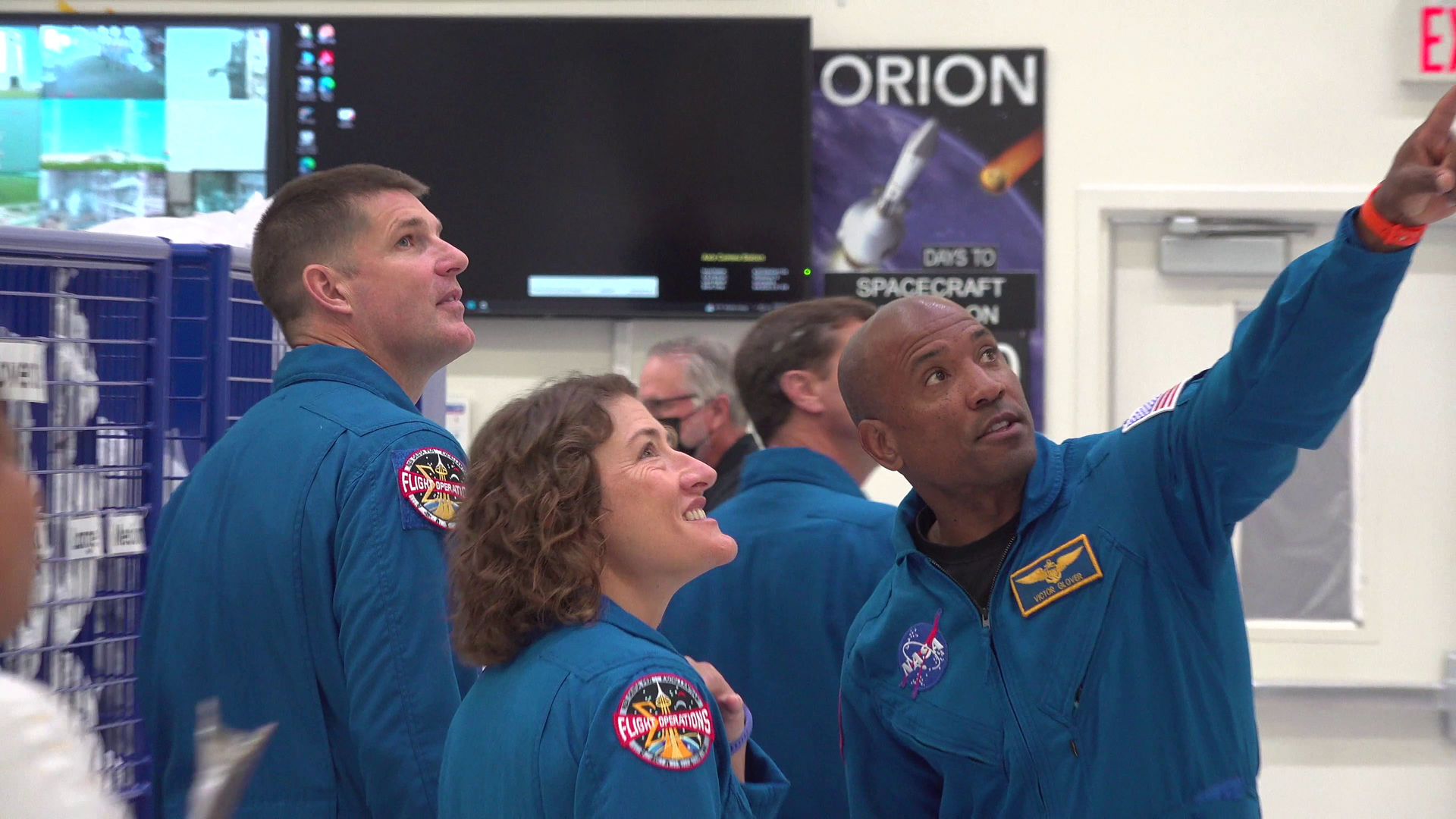
Access the video
Like Artemis I, Orion’s second mission will be launched from the Kennedy Space Center in Florida, USA. Once in low-Earth orbit, the second stage – Interim Cryogenic Propulsion Stage (ICPS) – will fire to insert the spacecraft into a highly elliptical demonstration orbit around Earth for a 24-hour check of systems. At its farthest point the crew of four will be over 2220 km above Earth during this first phase of the mission. Whereas in the first mission the second stage fired Orion into its lunar orbit, for the second mission it will be the European Service Module that will give the spacecraft its final push to inject it into translunar orbit.

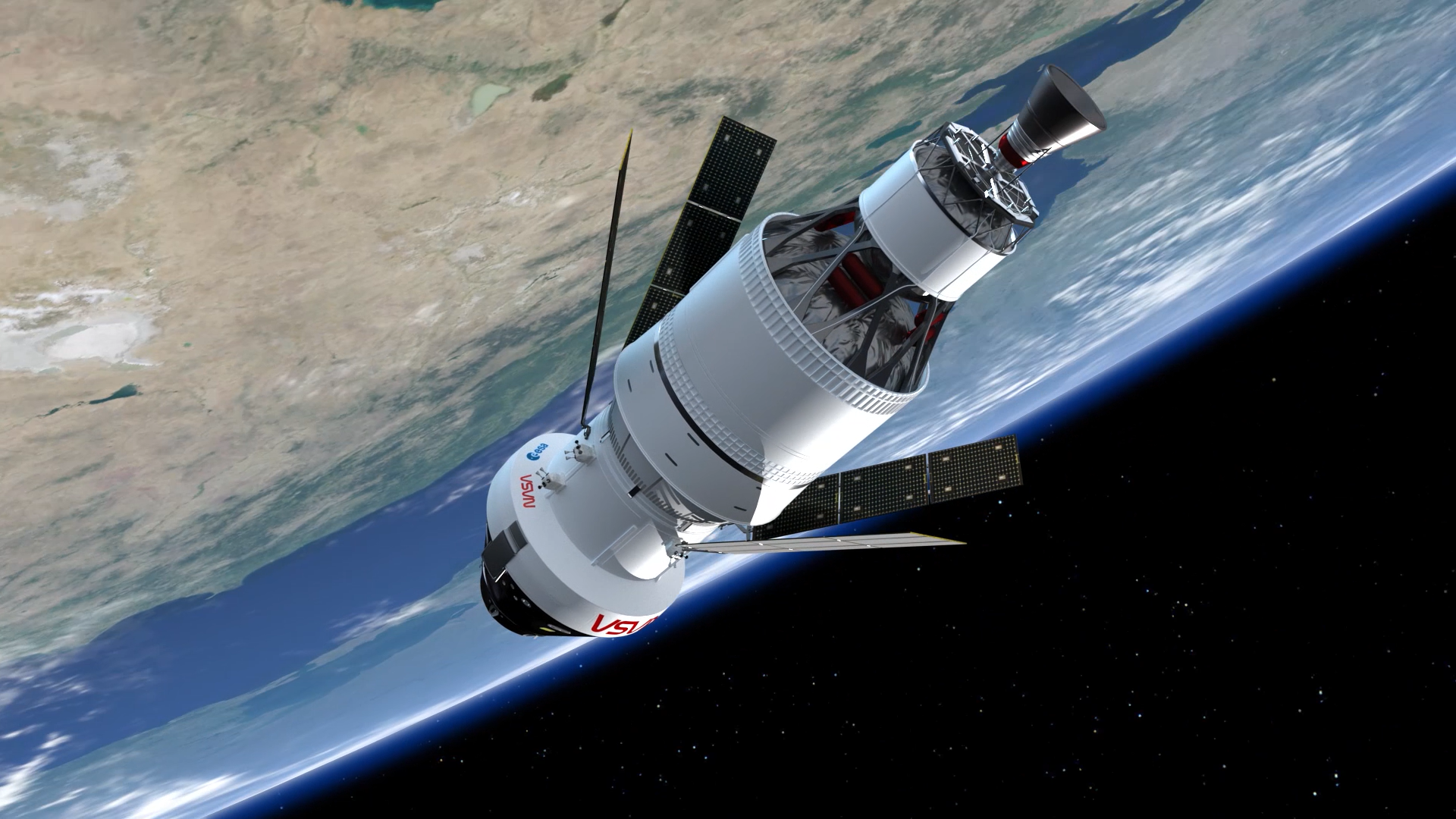
Access the video
Before departing Earth orbit to the Moon, the mission plan will see Orion give a full demonstration of the European Service Module’s thrusters in a proximity operations demonstration sequence. The demonstration of the spacecraft’s capabilities involved separating from the Interim Cryogenic Propulsion Stage, rotating to face the cryogenic stage, flying back towards it and then departing again. The operations will also use and test a docking camera, a new addition to the spacecraft since the Artemis I mission.
The crew will fly Orion to 8889 km beyond the Moon before completing a lunar flyby and returning to Earth. The mission will take a minimum of eight days and will collect valuable flight test data.
Technical details of the European Service Module
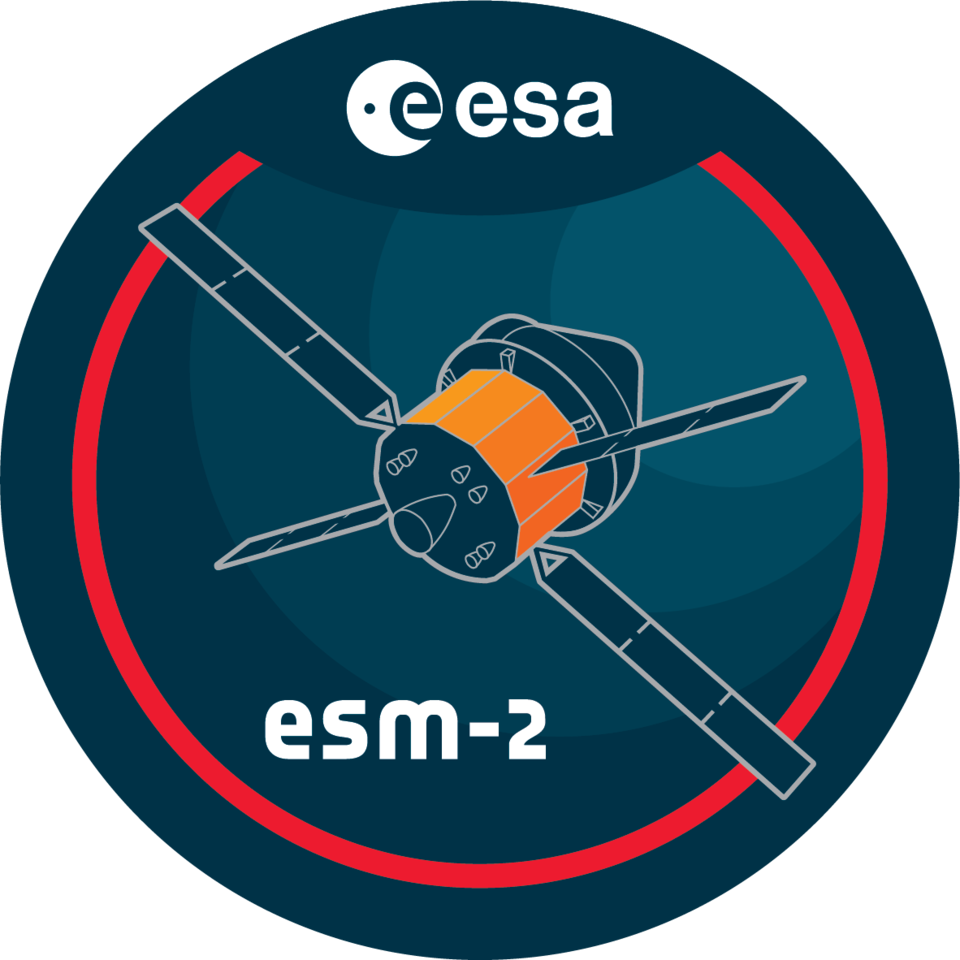
The total launch mass of ESA’s contribution to the Orion mission is 13 500 kg for the lunar missions (Orion will weigh over 20 tonnes in total):
- 8600 kg of usable propellant
- 240 kg of potable water
- 30 kg of nitrogen
- 90 kg of oxygen
- Payload volume up to 0.57 m3
- Payload mass up to 380 kg
Artemis II step-by-step
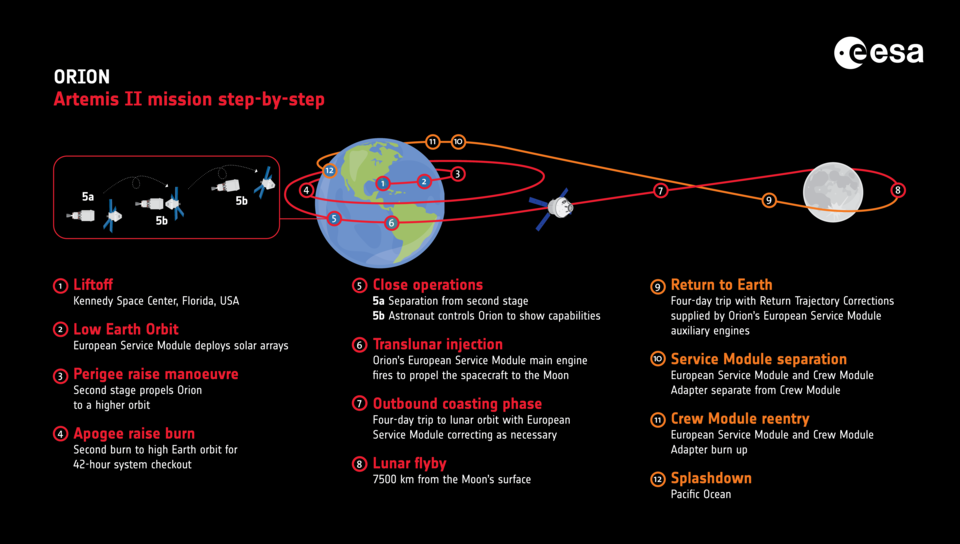
- Launch by Space Launch System from pad 39B, Kennedy Space Center
- Mission control perform checks in low-Earth parking orbit
- Perigee Raise Manoeuvre: injection into elliptical high Earth demonstration orbit by Interim Cryogenic Propulsion Stage 40 minutes after liftoff
- Apogee Raise Burn by Interim Cryogenic Propulsion Stage
- 42-hour checkout period of systems (orbit of 185 km at closest point to Earth and 2600 km at farthest point)
- Interim Cryogenic Propulsion Stage disposal
- Translunar injection by Orion
- Trip to the Moon
- Flyby of the Moon
- Free-return trip to Earth (no engine firing required)
- Separation of the Crew Module from the expendable elements of Orion (the European Service Module and the Crew Module Adapter)
- Reentry of the Crew Module and splashdown in the Pacific Ocean





